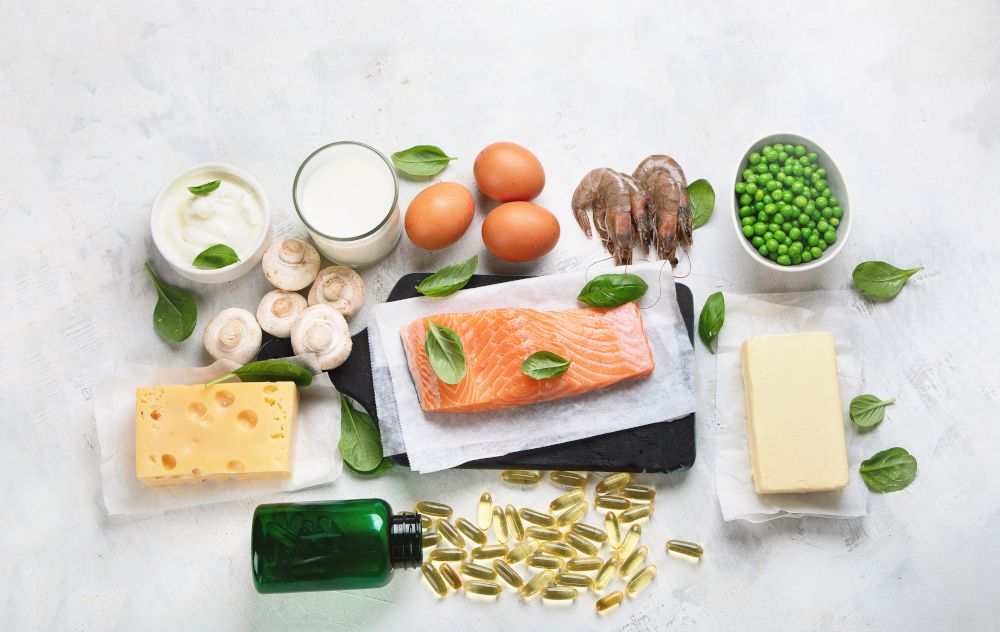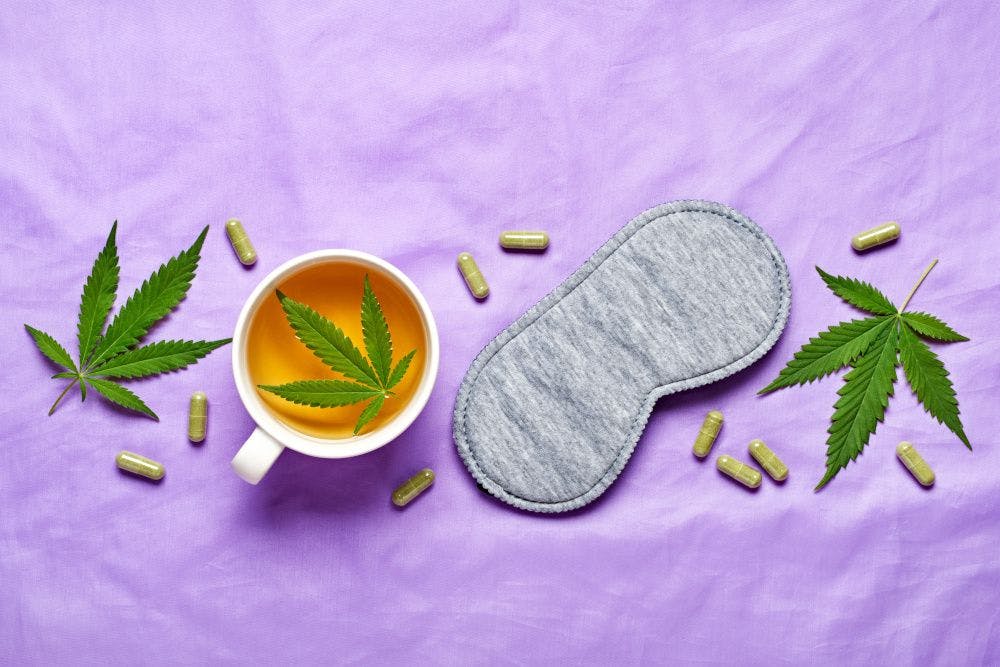Vitamin D gets its due: How COVID-19 is focusing attention on vitamin D—and how brands can keep it there
Vegan options, innovative delivery systems, and ingredient pairings will keep consumers coming back to vitamin D long after the pandemic has passed.
Photo © Bit24 - Stock.adobe.com

What’s one sure sign that a vitamin’s hit the big leagues? When a member of the U.S. House of Representatives introduces a resolution recognizing it, for starters.
And that’s just what Representative Glenn Grothman (R-WI) did last February when he brought to the chamber floor House Resolution 116, both acknowledging vitamin D’s potential to prevent complications from COVID-19 and imploring the Centers for Disease Control and Prevention and FDA to issue new guidance encouraging its consumption during these vulnerable times.
In so doing, Representative Grothman took an unambiguous stand on the micronutrient that its proponents were quick to applaud. But the resolution didn’t so much spark discussion about vitamin D as amplify one already in progress in which the supplement industry, the healthcare community, and consumers alike have finally been giving D its due.
Mounting Evidence
More than 100 published studies—including at least 14 meta-analyses—have explored vitamin D’s relationship to COVID-19 outcomes, says Luke G. Huber, ND, MBA, vice president, scientific and regulatory affairs, Council for Responsible Nutrition (CRN; Washington, DC).
Scientists working with CRN on the VitaminDandME.org project have even identified 12 meta-analyses looking specifically at how vitamin D status influences the illness’s course, and among the lessons they’ve extracted is that blood levels of the vitamin are “significantly associated with either higher incidence, severity, or mortality from COVID-19,” Huber says.
Christiane Lippert, global product manager, vitamins and delivery systems, Lycored (Branchburg, NJ), is familiar with those findings, and notes that respiratory repercussions, in particular, can plague patients with low vitamin D status, with one meta-analysis1 showing that such patients “presented an increased risk of acute respiratory distress syndrome, requiring admission to intensive care,” she adds.
As for research into how active vitamin D intervention affects COVID-19 outcomes, one meta-analysis2 not only demonstrated an inverse correlation between blood levels and mortality risk, but indicated that a mortality rate approaching zero could “theoretically” be achieved by raising serum vitamin D3 (cholecalciferol) levels above 50 ng/ml.
And while the world awaits the sort of large, randomized, controlled intervention trials that could determine causality definitively, one early intervention trial3 involving 40 patients with mild COVID-19 showed that those receiving 60,000 IU of vitamin D per day for seven days were three times more likely to test negative for SARS-CoV2 by day 21 than were those receiving a placebo.
Beyond the Pandemic
The mounting evidence might trigger in vitamin D advocates a twinge of vindication at seeing their pet nutrient finally receive the attention it deserves; yet at the same time, they point out that vitamin D’s benefits were worth celebrating well before any link to COVID-19 emerged.
As Huber explains, “Vitamin D was first known for bone development and maintenance, as it plays a key role in the metabolism of calcium and phosphorus, two important minerals for bone integrity. But vitamin D has many other important functions, including its participation in immune maintenance, oral health, muscle health and strength, regulation of gene transcription, and protein-synthesis promotion. And results from the VITAL clinical trial4 published last month demonstrate a decreased incidence of autoimmune diseases in older adults taking vitamin D supplements.”
That trial is a large-scale, ongoing project involving 25,871 subjects that aims to understand how vitamin D3 and omega-3 supplementation influence risk for cancer, heart disease, and stroke. Lippert—who’s also been following its progress—finds the recent autoimmune results noteworthy in light of “the lack of other effective strategies for reducing the incidence of autoimmune disease,” she says.
Vitamin D status has also been linked to heart disease, cancer, insulin resistance, inflammation, neurological disorders, and adverse outcomes in pregnancy5, Lippert continues, and a recent study6 involving women with female-pattern hair loss even found that a combination of the vitamin and topical minoxidil produced greater hair growth than either treatment alone, she adds.
Package Deal
“One interesting discovery,” Lippert continues, “is how vitamin D provides benefits in so many areas, especially when it’s paired synergistically with other ingredients.”
And indeed, vitamin D’s standout partner is vitamin K2, which works with D to funnel calcium toward the tissues that need it—teeth and bones, for instance—and away from those that don’t, such as the blood vessels.
More specifically, “Vitamin D upregulates vitamin K–dependent proteins,” explains James DiNicolantonio, PharmD, director of scientific affairs, AIDP (City of Industry, CA), “and vitamin K allows those proteins to work to inhibit arterial calcification while also improving bone health.”
Dominik Mattern, vice president, marketing, at Kappa Bioscience Group (Oslo, Norway), notes that his company has been working with “a global network” of researchers and vitamin K2 experts to explore the “synergy” between the two nutrients, adding that while each one is quite different from the other biochemically, “their activities occur on a continuum from a functional perspective, and they’re synergistic and unified.”
Mattern even quotes one of Kappa’s K2 experts, naturopathic doctor Andrew Myers, as putting it like this: “Vitamin K2 makes D3 products better, safer, and more effective from a supplementation perspective.”
While Myers’s summation “condenses the science a lot,” Mattern concedes, “it still clarifies that we’ll see more combination products pairing vitamin K2 and D3 in the future.”
Coming Up Short
Such products can’t arrive too soon, as anything that can deliver more vitamin D to consumers—whether paired with vitamin K or not—is sorely needed. The reason, Huber says: “Many Americans still aren’t getting enough.”
Not only do the 2020-2025 Dietary Guidelines for Americans identify vitamin D as a “nutrient of public-health concern”; the National Health and Nutrition Examination Survey estimated Americans’ rate of vitamin-D deficiency (defined as a serum 25-hydroxyvitamin D level less than 20 ng/ml or 50 nmol/L) at 28.9%, and its rate of vitamin-D insufficiency (a serum 25-hydroxyvitamin D level of 20 to 30 ng/ml or 50 to 75 nmol/L) at 41%.
Culpability lies with a number of factors endemic to contemporary life, the first of which is the typical developed Western diet, which—fortified foods notwithstanding—deemphasizes key vitamin D sources like organ meats, egg yolks, dried mushrooms, fatty fish, and cod-liver oil. In addition, obesity and fat-malabsorption conditions—think celiac disease—can also cause people to come up short, Huber says.
But perhaps the highest-profile impediment to getting enough vitamin D is our indoor lifestyles. “It’s sun exposure that produces most of our vitamin D,” explains Kelly Patterson, clinical nutrition educator, OmegaQuant (Sioux Falls, SD), “and many of us don’t get enough sun exposure at the right times of day throughout the year, and especially during the winter, when vitamin D levels have a tendency to dip.” Her conclusion: “It’s important to get levels checked and supplement accordingly when deficient.”
At Stores Near You
Consumers appear to be hearing the message, and that—along with their pandemic-inspired turn toward health—is putting wind into vitamin D sales. SPINS (Chicago) calculates the vitamin’s year-on-year growth at 62%, making it one of the fastest-growing VMS subcategories in the immunity space7.
Adds Kendall Ridley, senior director of communications at CRN, “We saw 37% of supplement users taking vitamin D in 2020, and a year further into this pandemic our 2021 consumer survey8 reveals that 60% of supplement users who choose to supplement for immune health turn to vitamin D for that support. We think increased education about vitamin D’s benefits supporting immune health could certainly provide incentives to continue its use.”
As can novel delivery platforms. “Gummies are flying off shelves,” Lippert notes, and she claims that Lycored’s CapsuDar line of microencapsulated vitamins “can withstand the harsh pH and temperatures involved in gummy production, which formulators tell us many other vitamins can’t.”
The technology uses “precision microencapsulation” to build layers around the vitamin to protect it against ingredient interactions, she explains, and the company’s internal stability studies show that its CapsuDar D2 100 E product, in particular, displays almost twice the stability of a comparison product.
Studies also showed no loss of the vitamin active at production, compared to 13% losses in the competitive product. “And in an accelerated test replicating a two-year shelf life,” Lippert says, “the other product showed nearly 65% degradation of the vitamin, whereas ours showed only 30%.” Finally, required overages in CapsuDar topped out at 54% compared to 233% in the competitor—“a massive difference,” she says.
As a vitamin D2 vehicle, CapsuDar is vegan—which makes sense, given that vitamin D2 (ergocalciferol) is largely plant-derived. But the main source for supplemental vitamin D3 remains sheep’s-wool lanolin, which, obviously, isn’t.
To provide vegans and vegetarians an acceptable vitamin D3 option, AIDP developed VegD3. Sourced from a sustainable algae with a fully traceable supply chain, the product “offers superior purity and quality to lanolin D3,” DiNicolantonio claims, and is pesticide-, protein-, and heavy-metal-compliant. It even sports Vegan Society approval, he adds.
From a formulation standpoint, it plays well in most food, beverage, and supplement applications thanks to what DiNicolantonio describes as its “excellent organoleptic properties” and high stability—possibly explaining why AIDP saw VegD3’s 2021 growth outpace that of the company’s traditional lanolin vitamin D3, nearly doubling its sales of 2020.
There’s a good chance that the spotlight on D shone by COVID-19 helped, too. And “while some of that impact may subside,” Lippert says, “the facts about vitamin D’s efficacy and synergistic impact on wellbeing are now out there, and demand will endure long into the future.”
References
- Chiodini I et al. “Vitamin D status and SARS-CoV-2 infection and COVID-19 clinical outcomes.” Frontiers in Public Health. Published online December 22, 2021.
- Borsche L et al. “COVID-19 mortality risk correlates inversely with vitamin D3 status, and a mortality rate close to zero could theoretically be achieved at 50 ng/mL 25(OH)D3: Results of a systematic review and meta-analysis.” Nutrients, vol. 13, no. 10 (October 14, 2021): 3596
- Rastogi A et al. “Short term, high-dose vitamin D supplementation for COVID-19 disease: A randomised, placebo-controlled, study (SHADE study).” Postgraduate Medical Journal, vol. 98 (February 2022): 87-90
- Hahn J et al. “Vitamin D and marine omega-3 fatty acid supplementation and incident autoimmune disease: VITAL randomized controlled trial.” BMJ. Published online January 26, 2022.
- Kimball SM et al. “Official recommendations for vitamin D through the life stages in developed countries.” European Journal of Clinical Nutrition, vol. 74, no. 11 (November 2020): 1514–1518
- Hassan GFR et al. “Treatment with oral vitamin D alone, topical minoxidil, or combination of both in patients with female pattern hair loss: A comparative clinical and dermoscopic study.” Journal of Cosmetic Dermatology. Published online ahead of print January 10, 2022.
- SPINS report. “Unlock 2022’s Biggest Health & Wellness Shopper Trends with Product Intelligence.”
- Council for Responsible Nutrition. “Consumer Survey on Dietary Supplements.” 2021.

Prinova acquires Aplinova to further increase its footprint in Latin America
April 7th 2025Prinova has recently announced the acquisition of Brazilian ingredients distributor Aplinova, which is a provider of specialty ingredients for a range of market segments that include food, beverage, supplements, and personal care.





















